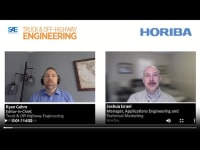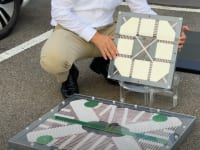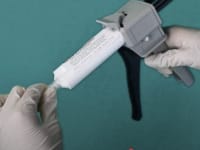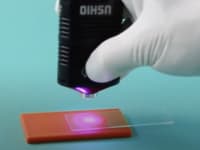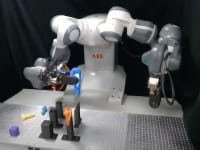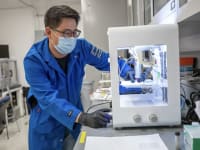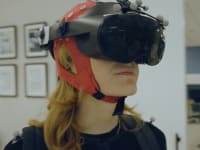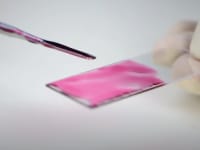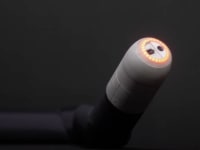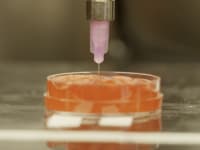61
169
-1
4050
30
Briefs: Sensors/Data Acquisition
Satellite Situation Update
Satellite Situation Update (SSUP) software shows the current locations of a selected set of orbiting spacecraft, along with each satellite’s ground track and/or orbit shape. SSUP is intended as a real-time display, showing multiple spacecraft, that is suitable for a large wall monitor meant to be in public spaces for...
Briefs: Robotics, Automation & Control
Autonomous Micro Aerial Vehicle Flight Using Optical Flow and Inertial Cues
Micro aerial vehicles (MAVs) are agile and have unstable flight dynamics. They require a failsafe method to be navigated through areas even without GPS coverage. The approach of this work is to use only the feature matches between two consecutive images, i.e. optical flow...
Briefs: Robotics, Automation & Control
Universal Robotically Operated Leave-Behind Gripper
This universal robotically operated leavebehind gripper allows robotic (or extravehicular activity — EVA) attachment capability of any object at eight existing types of attachments at the International Space Station (ISS). It enables expansion of external stowage and payload sites to include...
Briefs: Robotics, Automation & Control
DshellCommon Simulation Framework
DshellCommon software has been developed for specifying and executing generic multibody system simulations. This innovation helps the user create and execute simulations for mechanisms, vehicles, spacecraft, or other systems by making it easier to write simulation “run scripts” for systems that vary from simple...
Briefs: Robotics, Automation & Control
Neutrally Buoyant Tank Inspection and Cleaning Robot
Huge savings in cost and inspection times (as well as improved safety) could be obtained by performing in-service inspection of tank floors and walls with robotic devices. This would have a reduced environmental impact and meet EPA and state regulations.
Briefs: Robotics, Automation & Control
Visualization and Introspection for Teleoperation of Robotic Systems
The Space Exploration and Analysis Simulations (SEAS) project at JPL performs analysis of advanced mission and system concepts on behalf of NASA. One of the concepts being explored involves operation of robotic rovers on the Moon from a remote operator station located either at a...
Briefs: Robotics, Automation & Control
The Exoskeleton (EXO) is a device that falls into a new classification of robotics called wearable robots. On-orbit applications include countermeasures and dynamometry, allowing for continual assessment of a...
Briefs: Aerospace
Shuttle Orbiter Entry Aero Reconstruction Tool
A new tool calculates vehicle aerodynamic flight parameters from observed flight trajectory. These flight-observed parameters are then compared to the expected aerodynamic parameters for a nominal vehicle flying the same trajectory. The differences in the observed versus expected aerodynamic parameters...
Briefs: Aerospace
C++ Aerospace Vehicle Modeling Software
This collection of C++ classes allows users to create and simulate aerospace vehicle models that are needed to test prototyped display software. A software model of the Apollo LEM spacecraft was developed on a Windows-based PC, and was used for initial testing and research of cockpit displays. The model was...
Briefs: Aerospace
Autonomous Quadrotor Safety System
Autonomous operations of small unmanned aerial vehicles, or UAVs (quadrotors), require safety modules to alert a human operator of a critical system state, or even take over control of the vehicle entirely to initiate a pre-defined safety maneuver during an emergency (e.g. an emergency landing when a radio link is...
Briefs: Aerospace
The Spot and Runway Departure Advisor, or SARDA, is NASA’s contribution to improving the efficiency of airport surface operations. It is the centerpiece of a partnership among airlines, airports, and...
Briefs: Aerospace
Two-Phase Airborne Security Search
This innovation is an airborne area security search system and method that features a two-phase search from an unmanned aerial vehicle (UAV) using a novel combination of sensor technologies not previously employed. Its key strength is a wide-area search at high resolution for reliable identification of objects. It...
Briefs: Aerospace
Blended Cutout Flap for Reduction of Jet-Flap Interaction Noise
An aircraft trailing edge device, coupled with an aircraft wing, provides a reduction in jet-flap interaction noise while preserving the aerodynamic load capacity of the trailing edge. Embodiments of the present invention provide a trailing edge flap device that includes a center flap...
Briefs: Electronics & Computers
Fault Recovery for Multi-Phase Power Converters
A fault recovery method for multiphase power converters enables delivery of reduced output power of as much as 66% of normal power in the event of a shorted power switch component. The need for redundant power converters in conventional multi-phase space power systems is reduced, if not eliminated....
Briefs: Electronics & Computers
Isolated Bidirectional DC Converters for Distributed Battery Energy Applications
Power systems are the core heartbeat of any advanced vehicle. Reliability and flexibility of these systems are of the highest priority. This innovation is a highly efficient and modular isolated bidirectional DC converter for battery energy applications that has been...
Briefs: Electronics & Computers
Device Accommodating Volume Expansion and Contraction for Water-Ice Phase Change Material Heat Sinks
This invention accommodates the volume expansion and contraction of water ice as it freezes and thaws, thus enabling the use of water as a phase change material (PCM) for thermal energy storage. Due to the relatively large volume expansion of water...
Briefs: Electronics & Computers
High-Power, Solid-State Power Amplifier System
The purpose of the invention was to increase the operational power levels of solid-state power amplifiers using state-ofthe- art power amplifier design and combining methodology. Using 1-kW RF modules and proper RF combining techniques, a system was built that generated 16 kW of RF power for use in...
Briefs: Electronics & Computers
H2O/NaCl-Based Radio Frequency Power Load
The purpose of the invention was to increase the operational power levels of power loads as well as improve the overall reliability and safety of existing systems. Using water (H2O), table salt (NaCl) or some other form of salt, and a matching network, an RF power load can be built to absorb transmitted...
Briefs: Software
Discovery Through Eigenbasis Modeling of Uninteresting Data
When presented with a new data set, a common initial goal is to explore its contents in a discovery mode to find items of interest. However, each user who views the data set may have a different scientific goal in mind, and therefore a different desired prioritization of the items for...
Briefs: Information Technology
Obstacle Avoidance Methods
Obstacle avoidance is a difficult problem due to the non-convex state constraints. Therefore, the feasible state space needs to be convexified, or split, into convex regions at which point the search for an optimal solution among those convex regions is done. Methods for obstacle avoidance include two mixed integer linear...
Briefs: Information Technology
Bar Code Scanner to Supplement Property Inventory Process
Within NASA Goddard, property inventories outside of the formal inventories had no automated method to perform quick checks of equipment location, especially during periods leading up to a formal inventory. One method that existed simply involved printing out an end-user’s equipment in a...
Briefs: Information Technology
Semantic Language and Tools for Reporting Human Factors Incidents
This human factors incident reporting tool for authoring and using human factors incident data combines semantic Web technologies with automated assistive technologies to aid users in finding relationships among incidents. The semantic indexing provided by the use of incident...
Briefs: Information Technology
Control Software for Integrated CW Radar Module
This software controls the behavior of a miniaturized microwave radar module. It controls the hardware, digitizes raw samples from the analog output of the module, and applies DSP (digital signal processing) algorithms to the data stream to reduce the bandwidth and data rate. It also implements an...
Briefs: Software
Furuno Radar/SureTrak Interface Software
The Wallops Flight Facility Launch Range has a need to interface data from ship surveillance Furuno radar to an existing surveillance display system (SureTrak). SureTrak is a multi-sensor waterway and air surveillance system. The display of Furuno radar data by the SureTrak system will be used for risk...
Briefs: Software
An Empirical Metric of Individual Datapoint Utility Given Ample Metadata as Applied to the OCO-2 Flight System
Traditionally, quality flags provided a binary yes/no estimation of a datapoint’s utility. However, in modern instrumentation, significant auxiliary information for each datapoint can be obtained. This permits prediction of more than a...
Briefs: Software
Gravitational Compensation Onboard a Comsat
This technique for compensating the gravitational attraction experienced by a test-mass freely floating onboard a satellite is new, and solves an important problem that all gravitational wave missions face. Its application to the geostationary Laser Interferometer Space Antenna (gLISA) mission concept...
Briefs: Electronics & Computers
Open Scheduling and Planning Interface for Exploration (Open SPIFe)
In order to accomplish mission objectives, NASA must be able to plan and sequence assets (spacecraft and astronauts) in a short amount of time. Planning is a complex process that involves reasoning about thousands of constraints and uncertain conditions in order to produce a...
Briefs: Software
AMMOS-PDS Pipeline Service (APPS) — Label Design Tool (LDT)
A software program builds PDS4 science product label (metadata) and automatically generates its description as part of the software interface specification (SIS) document. This software allows the mission system engineer to interact programmatically with the PDS4 information model, and...
Briefs: Electronics & Computers
Activity Model Problem Translator
The Problem Translator is a software program that translates functional Unified Modeling Language (fUML) activity models into a behavior-based computational problem representation language called Behavior XML (BXML). The BXML translation may then be solved by engines such as the Behavior and Analysis Engine. The...
Top Stories
Blog: Manufacturing & Prototyping
2025 Holiday Gift Guide for Engineers: Tech, Tools, and Gadgets
INSIDER: Research Lab
Scientists Create Superconducting Semiconductor Material
Blog: Software
Quiz: Materials
Blog: Aerospace
Tech Briefs Wrapped 2025: Top 10 Technology Stories
Blog: Manufacturing & Prototyping
Webcasts
 Upcoming Webinars: AR/AI
Upcoming Webinars: AR/AI
The Real Impact of AR and AI in the Industrial Equipment Industry
 Upcoming Webinars: Motion Control
Upcoming Webinars: Motion Control
Next-Generation Linear and Rotary Stages: When Ultra Precision...
 Upcoming Webinars: Energy
Upcoming Webinars: Energy
Hydrogen Engines Are Heating Up for Heavy Duty
 Podcasts: Medical
Podcasts: Medical
How Wearables Are Enhancing Smart Drug Delivery
 Podcasts: Power
Podcasts: Power
SAE Automotive Podcast: Solid-State Batteries




